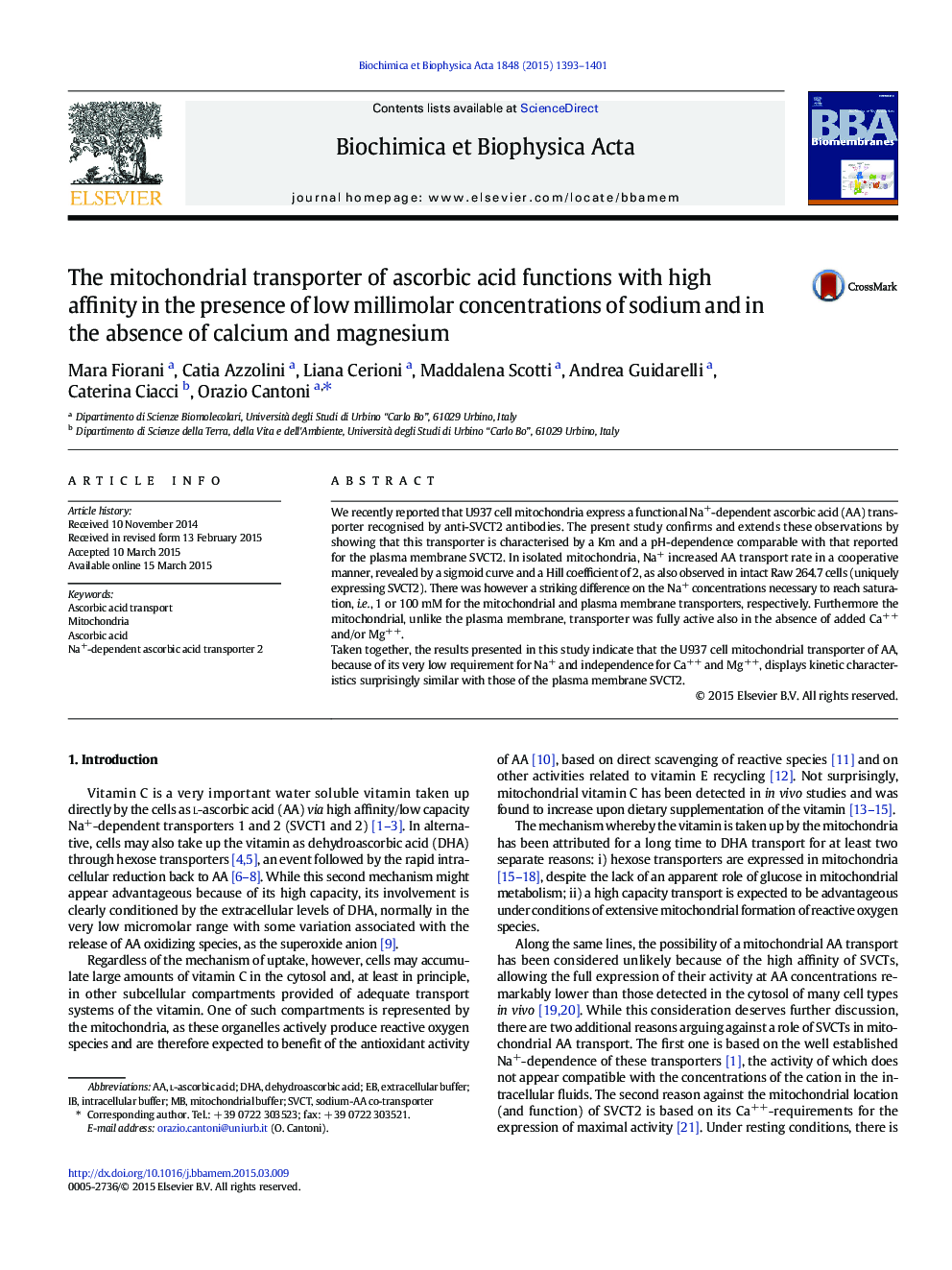| Article ID | Journal | Published Year | Pages | File Type |
|---|---|---|---|---|
| 1944113 | Biochimica et Biophysica Acta (BBA) - Biomembranes | 2015 | 9 Pages |
•We describe the mechanism whereby AA is accumulated in U937 mitochondria.•AA mitochondrial and plasma membrane transporters display analogous kinetics.•AA mitochondrial and plasma membrane transporters show similar Na+ cooperativity.•AA mitochondrial transporter requires 100 times less Na+ than plasma membrane SVCT2.•AA mitochondrial transporter is Ca++/Mg++-independent.
We recently reported that U937 cell mitochondria express a functional Na+-dependent ascorbic acid (AA) transporter recognised by anti-SVCT2 antibodies. The present study confirms and extends these observations by showing that this transporter is characterised by a Km and a pH-dependence comparable with that reported for the plasma membrane SVCT2. In isolated mitochondria, Na+ increased AA transport rate in a cooperative manner, revealed by a sigmoid curve and a Hill coefficient of 2, as also observed in intact Raw 264.7 cells (uniquely expressing SVCT2). There was however a striking difference on the Na+ concentrations necessary to reach saturation, i.e., 1 or 100 mM for the mitochondrial and plasma membrane transporters, respectively. Furthermore the mitochondrial, unlike the plasma membrane, transporter was fully active also in the absence of added Ca++ and/or Mg++.Taken together, the results presented in this study indicate that the U937 cell mitochondrial transporter of AA, because of its very low requirement for Na+ and independence for Ca++ and Mg++, displays kinetic characteristics surprisingly similar with those of the plasma membrane SVCT2.
Graphical abstractFigure optionsDownload full-size imageDownload high-quality image (139 K)Download as PowerPoint slide
